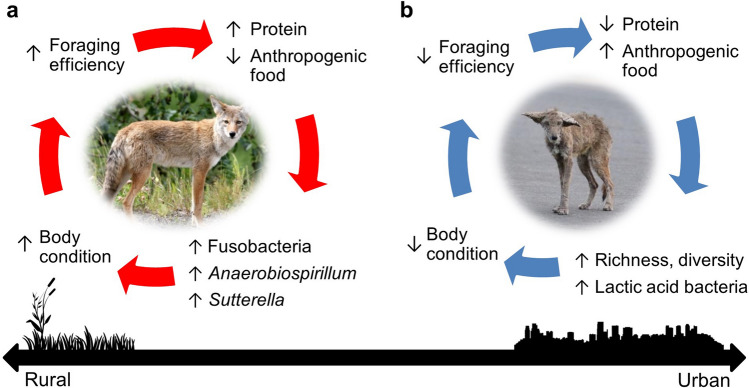Figure 6.
Conceptual model of positive feedback loops among diet, microbiome composition, and health. (a) Coyotes consuming more protein, and less anthropogenic food, have more Fusobacteria, Anaerobiospirillum, and Sutterella in their microbiome and improved body condition. This, in theory, promotes the ability to continue capturing prey, and is the more common cycle in rural environments. (b) Increased diet subsidization with anthropogenic food leads to increased microbiome richness and diversity, higher abundances of select lactic acid bacteria such as Streptococcus and Enterococcus, and lower body condition. Poor health likely decreases foraging efficiency, thus increasing the reliance on anthropogenic food. This cycle predominates in urban-exploiting coyotes (images from Jitze Couperus, left, and Michael Renzi, right).

